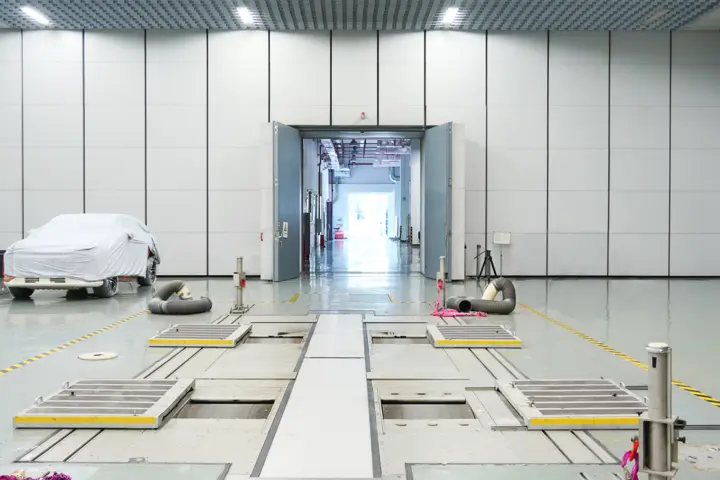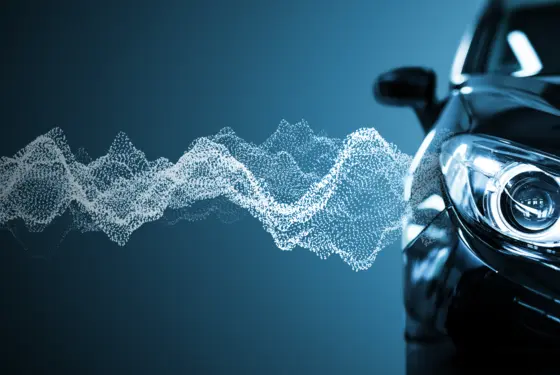“With the support of our State Key Laboratory and the Chongqing Research Center of Vehicle NVH Engineering and Technology, we’ve developed new technologies for NVH, fatigue and durability testing in China,” says Dr. Li Peiran, Deputy Director of the CAERI Automotive Engineering Technology Center and Director of the CAERI NVH Technology Center. Dr. Li has led CAERI’s NVH research for over 10 years: this senior engineer and his team rely on dynamic measurement technology from Kistler.
“We collaborate closely with Kistler to help our customers identify and address technical problems, enabling them to optimize their products.”
Dr. Li Peiran, Deputy Director of the CAERI Automotive Engineering Technology Center and Director of the CAERI NVH Technology Center
What makes NVH engineering so special? And what resources are necessary for success in this field? Among the key factors here are the new scenarios created by electric and hybrid vehicles, such as changes in design logic or the use of two different powertrain systems: these have presented NVH test engineers with some major challenges. Wu Yong, an NVH engineer at CAERI who specializes in performance optimization and noise cancelling, explains: “Vehicle NVH testing is much more complicated than most other processes. First: the constantly changing state of a vehicle during starting, driving and braking makes it an unstable and complex system. That’s why huge amounts of data are required to identify the sources and triggers of certain symptoms. And second: source identification is not the end of the process. To determine the transmission medium or receiving ends, we have to understand the vehicle’s inner working mechanism – and that calls for a great deal of testing, as well as multi-factor analyses.”
Accurately measuring vehicle and powertrain NVH
With the help of accelerometers from Kistler, the NVH engineers at CAERI are able to attain a new level of NVH optimization. Typical scenarios include steering vibration testing, thermal management system vibration testing, and further analyses at vehicle and component levels. One of the principal products used for NVH testing at CAERI is the 8763B triaxial IEPE accelerometer from Kistler. This ultra-compact, lightweight and robust cube accelerometer with an edge length of only 10.9 mm (0.43 in) includes three threaded holes for enhanced efficiency and flexibility during the mounting phase and when selecting the orientation.
For electric powertrain testing, the 8763B is available with multiple measuring ranges (from 50 g to 2,000 g); it features a wide usable frequency response (up to 15 kHz±10%) combined with high immunity to electromagnetic fields. Last but not least: small vibrations that are typical of electric motors can now be captured even more accurately, because further product refinements have been introduced to significantly reduce the noise threshold compared to the previous version of the product. As an added benefit for CAERI’s NVH engineers, all Kistler sensors can be easily operated with different kinds of data acquisition software, with almost no extra time needed to spend for preparation.
Reliable development partnership fosters innovation
CAERI’s advanced NVH testing facilities – equipped with state-of-the-art measurement technology from Kistler – enable numerous customers to develop and improve their vehicles: examples include ChangAn Auto, BAIC Motor, Dongfeng Motor and BYD. The final words from Dr. Li: “Over the years, we have contributed several cutting-edge NVH technologies to the industry, and we’ve helped various automakers to develop high-quality vehicles.” Many of the best-selling models in the Chinese market and beyond would have been impossible without CAERI’s R&D work, and the Institute is sure to continue placing its trust in Kistler technology going forward.




![[object Object] Measurement technology from Kistler helps CAERI perform NVH tests, optimize vehicles and define new industry standards.](https://kistler.cdn.celum.cloud/SAPCommerce_CMSGalleryPreview_96x64/935-387.webp)




![Shaping the sound of future mobility [object Object]](https://kistler.cdn.celum.cloud/SAPCommerce_Document_Preview/961-629e.webp)